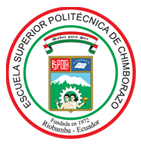MEJORAMIENTO DE LAS PROPIEDADES MECÁNICAS DEL POLIPROPILENO RECICLADO MEDIANTE ADICIÓN DE FIBRAS VEGETALES, POLIETILEN TERFTALATO Y TRATAMIENTO TÉRMICO.
DOI:
https://doi.org/10.47187/perf.v1i27.146Palabras clave:
Reciclaje Mecánico, Plásticos Post consumo, Compostes PolipropilenoResumen
En los residuos sólidos plásticos el polipropileno es uno de los termoplásticos de mayor consumo a nivel urbano y por ende el de mayor generación de residuos. En este sentido, el reciclaje mecánico es la tecnica mas sencilla de aplicación aprovechando de residuos de la misma familia de termoplastico que acondicionado con otras fibras permiten el mejoramiento de sus propiedades, mediante la elaboración de composites con fibras naturales o sinteticas. El presente estudio tiene como objetivo el analisis de las propiedades más importantes de composites hechos de poliproplieno con fibras naturales: de plátano y de abacá; composites de polipropileno con polietilen tereftalato a diferentes concentraciones, con y sin acoplante; y un tratamiento termico para el mejoramiento de la matriz de polipropileno reciclado. Se obtienen probetas mediante extrusión de monohusillo a diferentes perfiles de temperatura y concentraciones de fibra adicionada. Se plantea el tratamiento térmico al polipropileno midiendo el grado de cristalización que se genera. Posterior, se mide la tracción, flexión y calorimetría diferencial de barrido de los composites de buena trabajabilidad usando como acoplante anhidrido terftalico. Los resultados muestran mejoras en las propiedades de tracción y flexión al momento de adición del agente acoplante en ambos composites y con concentraciones bajas de fibra de refuerzo.
Descargas
Citas
Sullins T, Pillay S, Komus A, Ning H. Hemp fiber reinforced polypropylene composites: The effects of material treatments. Compos Part B Eng [Internet]. 2017;114:15–22. Available from: http://dx.doi.org/10.1016/j.compositesb.2017.02.001
Shrivastava A. Environmental Aspects of Plastics. Introd to Plast Eng. 2018;207–32.
Gu F, Guo J, Zhang W, Summers PA, Hall P. From waste plastics to industrial raw materials: A life cycle assessment of mechanical plastic recycling practice based on a real-world case study. Sci Total Environ. 2017;601–602:1192–207.
Lila MK, Singhal A, Banwait SS, Singh I. A recyclability study of bagasse fiber reinforced polypropylene composites. Polym Degrad Stab [Internet]. 2018;152:272–9. Available from: https://doi.org/10.1016/j.polymdegradstab.2018.05.001
Senthilkumar K, Saba N, Rajini N, Chandrasekar M, Jawaid M, Siengchin S, et al. Mechanical properties evaluation of sisal fibre reinforced polymer composites: A review. Constr Build Mater [Internet]. 2018;174:713–29. Available from: https://doi.org/10.1016/j.conbuildmat.2018.04.143
Matias ÁA, Lima MS, Pereira J, Pereira P, Barros R, Coelho JFJ, et al. Use of recycled polypropylene/poly(ethylene terephthalate) blends to manufacture water pipes: An industrial scale study. Waste Manag. 2020;101:250–8.
Bommanna K, Shanthakumar GC. Study of Sisal Fibre Attrition and Characterization during Direct Extrusion Compression Moulding. Mater Today Proc [Internet]. 2018;5(5):13251–7. Available from: https://doi.org/10.1016/j.matpr.2018.02.316
Bledzki AK, Franciszczak P, Osman Z, Elbadawi M. Polypropylene biocomposites reinforced with softwood, abaca, jute, and kenaf fibers. Ind Crops Prod [Internet]. 2015;70:91–9. Available from: http://dx.doi.org/10.1016/j.indcrop.2015.03.013
Dickson AR, Sandquist D. Mode of wood fibre breakage during thermoplastic melt processing. Compos Part A Appl Sci Manuf [Internet]. 2018;112(July):496–503. Available from: https://doi.org/10.1016/j.compositesa.2018.07.004
Nonato RC, Bonse BC. A study of PP/PET composites: Factorial design, mechanical and thermal properties. Polym Test [Internet]. 2016;56:167–73. Available from: http://dx.doi.org/10.1016/j.polymertesting.2016.10.005
Saba N, Paridah MT, Jawaid M. Mechanical properties of kenaf fibre reinforced polymer composite: A review. Constr Build Mater [Internet]. 2015;76:87–96. Available from: http://dx.doi.org/10.1016/j.conbuildmat.2014.11.043
Awoyera PO, Adesina A. Plastic wastes to construction products: Status, limitations and future perspective. Case Stud Constr Mater [Internet]. 2020;12:e00330. Available from: https://doi.org/10.1016/j.cscm.2020.e00330
Pang YX, Jia DM, Hu HJ, Hourston DJ, Song M. Effects of a compatibilizing agent on the morphology, interface and mechanical behaviour of polypropylene/poly(ethylene terephthalate) blends. Polymer (Guildf). 2000;41(1):357–65.
Francioso V, Moro C, Castillo A, Velay-Lizancos M. Effect of elevated temperature on flexural behavior and fibers-matrix bonding of recycled PP fiber-reinforced cementitious composite. Constr Build Mater [Internet]. 2021;269(xxxx):121243. Available from: https://doi.org/10.1016/j.conbuildmat.2020.121243
Cardfelt A. Model system study of recycled polyethylene terephthalate and polypropylene blends by. 2015;(162).
Mahendra IP, Wirjosentono B, Tamrin, Ismail H, Mendez JA, Causin V. The influence of maleic anhydride-grafted polymers as compatibilizer on the properties of polypropylene and cyclic natural rubber blends. J Polym Res. 2019;26(9).
Akshaya EM, Palaniappan R, Sowmya CF, Rasana N, Jayanarayanan K. Properties of Blends from Polypropylene and Recycled Polyethylene Terephthalate using a Compatibilizer. Mater Today Proc [Internet]. 2020;24:359–68. Available from: https://doi.org/10.1016/j.matpr.2020.04.287
Matias ÁA, Lima MS, Pereira J, Pereira P, Barros R, Coelho JFJ, et al. Use of recycled polypropylene/poly(ethylene terephthalate) blends to manufacture water pipes: An industrial scale study. Waste Manag. 2020;101:250–8.
Wu J, Chen T, Luo X, Han D, Wang Z, Wu J. TG/FTIR analysis on co-pyrolysis behavior of PE, PVC and PS. Waste Manag [Internet]. 2014;34(3):676–82. Available from: http://dx.doi.org/10.1016/j.wasman.2013.12.005
Wu MH, Wang CC, Chen CY. Chemical modification of atactic polypropylene and its applications as a crystallinity additive and compatibility agent. Polymer (Guildf) [Internet]. 2020;194(March):122386. Available from: https://doi.org/10.1016/j.polymer.2020.122386
Hidayah Marzuki N, Irfiani N, Uzir Wahit M, Othman N, Izyan Syazana Mohd Yusoff N. Mechanical properties of kenaf fiber and montmorillonite reinforced recycled polyethylene terephthalate/recycled polypropylene. Mater Today Proc [Internet]. 2018;5(10):21879–87. Available from: https://doi.org/10.1016/j.matpr.2018.07.046
da Costa HM, Ramos VD, de Oliveira MG. Degradation of polypropylene (PP) during multiple extrusions: Thermal analysis, mechanical properties and analysis of variance. Polym Test. 2007;26(5):676–84.
López Gayarre F, Suárez González J, Blanco Viñuela R, López-Colina Pérez C, Serrano López MA. Use of recycled mixed aggregates in floor blocks manufacturing. J Clean Prod. 2017;167:713–22.
Cely MM, Castellar O. G, Pereira C. J, Ángel V. R. Efecto de la velocidad de calentamiento sobre las propiedades mecánicas y resistencia a la corrosión de aleaciones de titanio modificadas. Ingeniare Rev Chil Ing. 2018;26(4):577–84.
Wan C, Sun G, Gao F, Liu T, Esseghir M, Zhao L, et al. Effect of phase compatibility on the foaming behavior of LDPE/HDPE and LDPE/PP blends with subcritical CO2 as the blowing agent. J Supercrit Fluids [Internet]. 2017;120:421–31. Available from: http://dx.doi.org/10.1016/j.supflu.2016.05.038
Publicado
Cómo citar
Número
Sección
Licencia

Esta obra está bajo una licencia internacional Creative Commons Atribución-NoComercial 4.0.


























